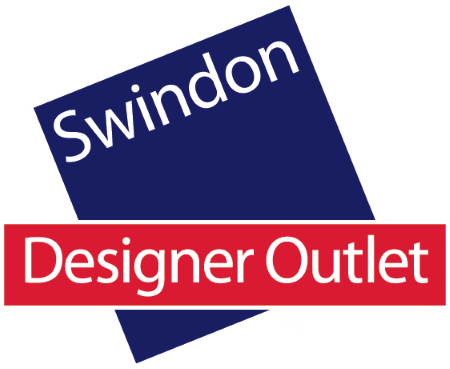In case you missed it see what’s in this section
Let's Talk
Kettlebells – The Future and The Past
Want to know whether you should be using kettlebells in your exercise regime? Read this informative blog post from T2 Fitness and find out!
Keep hold of something long enough they come back into fashion. Ever heard that?
If something is gonna cycle back around and re-invent itself it must be worth a second-look, right?
The thing about kettlebells though, for me, is that I don’t see why they fell off the radar in the first place. Well, that’s a bit of a lie. I know why; people are always looking for the next great exercise tool, the get-fit-quick protocol.
Thing is, the bells will get you fit, well, quickly.
With a bit of luck they won’t fade into obscurity this time around.
History and Background
Kettlebells can be dated back to Eastern Bloc Russia in the 1700s and in fact are used now as one of the Russian Army’s main conditioning tools. Instead of doing any kind of press-up test for their prospective soldiers they use a kettlebell snatch test instead. It is thought this is a much more useful yard-stick for measuring total body strength, power, stability and coordination.
The former Soviet Union athletes, regardless of sport tended towards training with bells too in preparation to the Olympic Games. This, if nothing else speaks to the versatility and variety of ends for which kettlebell training serves as the means.
Strength building, power training, anaerobic training, aerobic conditioning, fat loss, flexibility, agility, endurance and muscle gain. Are any of those things on your wish-list? I thought so, read on.
Why the Bell Tolls
Now admittedly from the 1700s to today would be a fair amount of time for a ‘fad’ to have lasted but the fact that we are seeing a revival shows there must be some benefit to using the bells. And I am convinced it’s more than ‘Well (insert celebrity name) does them!’.
We gym-goers like to catch on with the latest trend and be a part of it so that when it becomes popular we can say we were there from the beginning. Then when it loses its shine or worse, becomes mainstream (gasp of horror!) we ditch it for the next craze. Then we repeat the cycle all over again.

There are few things that are a staple in gyms all the time. Even the seemingly impossible to replace squats and bench press have their detractors. Charles Poliquin, a world renowned strength coach suggests there are not one, but many better ways to build your chest and avoid AC joint and rotator cuff problems along the way than the bench press. As recently as last year another top American coach, Mike Boyle, said in an article that he wouldn’t prescribe “conventional” squats anymore, instead opting for single-leg variations.
So it’s no surprise kettlebells fell off the map somewhat in the public’s eye.
As well as the dramatic effect they have had on Russian Army they have served as a useful tool in events such as strongman events and Scotland’s Highland Games.
To me the reason for the bells disappearance lies in two areas.
1. When used properly kettlebell training is bloody hard work. I’ve done sessions either myself and with clients that have lasted just 40 minutes and we’ve looked like we just got out of the shower.
Generally people like to go with easier exercise methods that don’t get them out of their comfort zones and like to tell friends proudly “I spent 2-hours in the gym today”.
Telling friends “I spent 40-minutes using one piece of equipment before nearly seeing my porridge in reverse” doesn’t get the same admiration it seems.
2. ‘Experts’ scare us. We hear tales all the time about different training methods that, maybe once in vogue, now are gonna cause us problems. As a result our gyms are now chock full of inner and outer thigh machines and other ‘safe’ ways of training.
I told you earlier how everything falls in and out of favour with experts and regular Joe’s alike. It’s almost a blessing that our health clubs have been overrun with fixed resistance machines because as they have been used more the users are developing issues with functional strength. That’s what happens when a muscle is not exercised through different ranges of motion in varying planes of movement, we develop imbalances.
These muscular imbalances have led to a rise in the clamour of exercisers to be taking part in ‘functional training programmes’.
Enter (drum-roll) the kettlebell.
So why should you use them? And how?
I would suggest that since caveman day we’ve seen a decline in the standard of our collective posture. We look like were going in reverse back through the evolutionary chain!
A lot of this has its roots in ‘lifestyle enhancements’, chairs we sit in etc, but mainly the fact that for the majority of the day we find ourselves in seated positions.
Stop me if I go off course but I would hazard a guess that your day goes something like this; wake up, sit down for breakfast, sit in the car to the office, sit at your desk (and protrude your shoulders forward to type), sit in the car home, sit for dinner and finally, after your stressful day, sit on the couch for a bit of TV. Notice a theme?
So, the first reason you should use kettlebells in your training is the fact that you will train standing up! The second reason is you will train the opposite muscles than you probably usually train.

We tend towards exercises for the muscles we can see in the mirror (think chest and biceps) and neglect your hamstrings, glutes and back musculature (posterior chain).
Kettlebell training is based on 3 core moves, the swing, clean and snatch. The common theme among these three is the use of the glutes as hip extensors (The action of standing from a squatted position) Not only do each of these exercises work to ‘wake up’ your dormant posterior muscles they also demand that you develop high force and transfer that force from one joint to the next in sequence.
That, my friend, is exactly how we were designed to move. Somewhere along the way we convinced ourselves that we need to try to isolate individual muscles.
Think about any movement you might make during the day, tasks like putting things in the cupboard, pegging the washing out etc. All of these movements require us to use our muscles in sequence.
The reason we see so many injuries occur during seemingly simple tasks has to do with not preparing our bodies appropriately for them. If your conditioned to transfer force from joint to joint and your brain can select the right muscles in order you are halfway there.
If you train at a threshold more demanding than your daily tasks (I’m going out on a limb and hoping pegging the washing out doesn’t require you to throw 16kg of washing onto the line) you shouldn’t face anything in regular life that will challenge you.
Any other reasons?
Oh please! You thought that was it? My goal is not to produce a brigade of elite washing peggers’ but to get you in the best shape of your life.
Other benefits of using kettlebells include their cardiovascular challenges (try doing 5 sets of 1-minute swings and see how your heart rate elevates) and muscle mass retention with metabolic rate increases (regular cardio work could result in loss of muscle leading to a lower metabolism).
The other thing they can help, and depending what time you choose to exercise this will impact you to differing degrees, is the space-saving benefits. Ever heard anyone say ‘barely enough room to swing a cat’?
Well, funnily enough that’s all the room you need. You can carve yourself out a little cubby in the gym and perform all of your exercises in circuit style simply altering the reps you do for each exercise based on the weight of the bell and need not worry about people taking over your equipment.
And?
It’s great fun.
Ok, you’ve convinced me, how do I start?
I always introduce my clients to the bells by teaching them to swing (I’m not talking about putting my car keys in a fruit bowl either!).
The swing is the most fundamental move you can do with the bell. Its dynamic, works all of your posterior chain muscles and will get your heart rate up.
You start by standing over the top of the bell, holding the handle with both hands. From there you squat slightly moving it between your legs as you crouch and then forcefully stand and thrust the bell forwards making sure to keep your heels on the floor and your arms straight (if performing this in front of a mirror be sure to keep a firm grip. Seven years is a long time).
As the bell reaches its peak height you reverse the action letting it swing beneath your legs again. This is one rep. Visualise the pirate ship at your favourite theme park and follow the same arc and you’re on your way.
There are loads of variations of the swing and remember it is the most fundamental exercise to use. From here, you can do so much more. For more help or to take your training to the next level feel free to contact me: [email protected] / 07816 240 137
Let me know how you get on.
*As always you should consult a doctor or exercise professional before partaking in any exercise regime and shouldn’t follow a program if there is any reason it would be advisable not to do so. I take no responsibility for injuries suffered as a result of exercise without the consent of a medical professional. Clean bill of health? Have fun!
Weather in Swindon
Listings






















